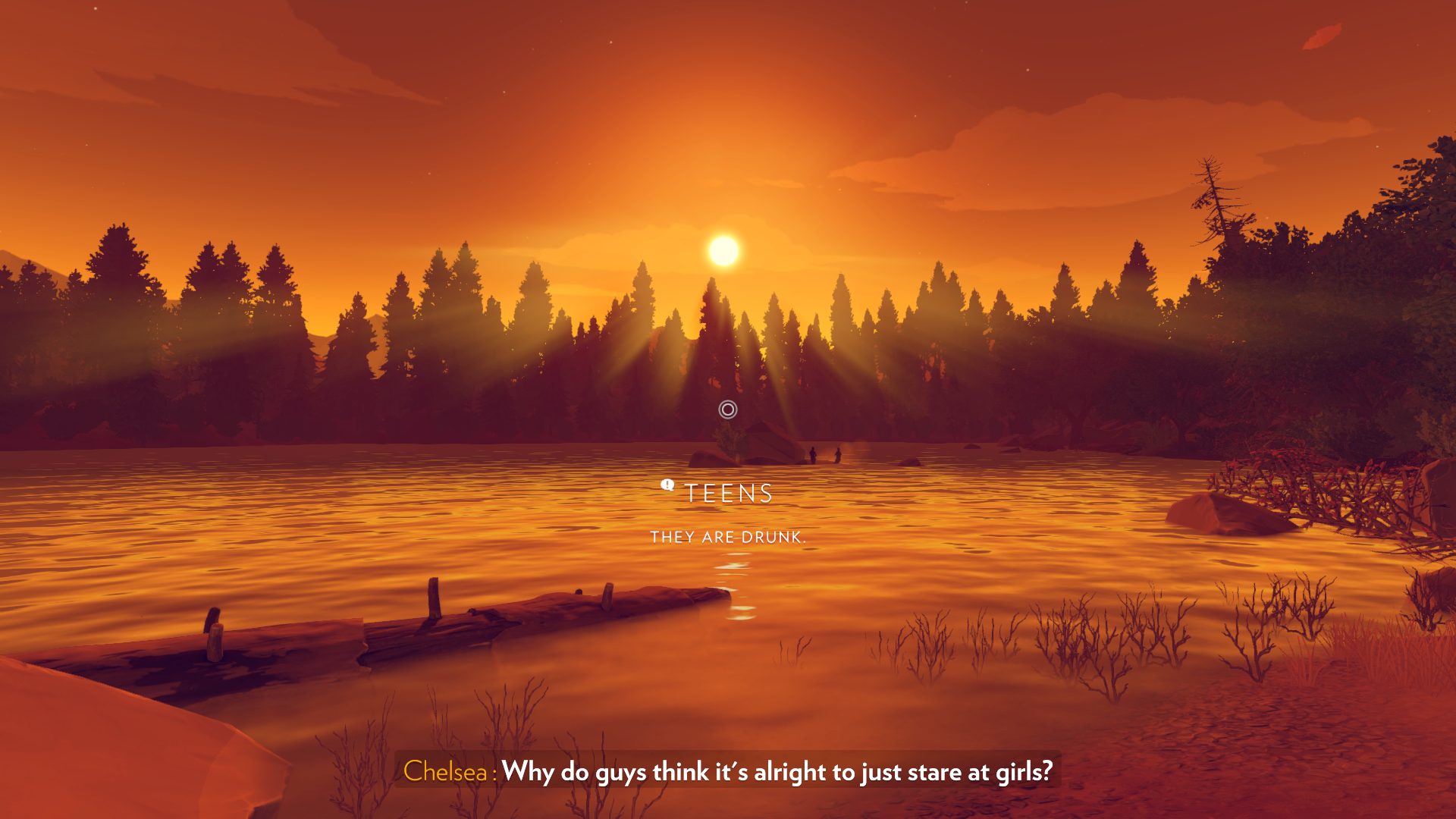
Firewatch characters full#
In Campo Santo's upcoming game In The Valley Of The Gods your companion is right there with you in full fleshy animated form (and with a great head of hair to boot), making eye contact, and giving you a literal hand. It gives our schlubby protagonist a physical presence absent from the invisible, weightless ciphers of Gone Home or The Vanishing of Ethan Carter, but it gives Delilah a physical presence too. The orange radio that you do this through is a pretty common sight, as Henry holds it up in front of him with his big papa bear hand. Delilah isn’t another one of those off screen characters who just talks at you, or otherwise dumps a load of exposition you’re actually engaging in conversation with her, directing the tone of your relationship whether it’s opening up about past regrets or indulging in silly banter. “And then we built a friendship that way through the two years of recording.”įrom strangers to confidants, there’s a two-way dynamic to how this relationship builds in the game (with possible romance on the cards if the player takes the conversation that way).

We recorded the game chronologically so when we have that awkward ‘What’s wrong with you?’ moment at the beginning, that was real,” she explains. Most people would likely recognise Sommer Harry Crane from the show. It also helped that Jones had never seen Mad Men. Since Henry and Delilah spend the whole game conversing with one another remotely, the same conditions were fairly easily achieved by director Sean Vanaman Skyping in both Jones and Henry’s voice actor Rich Sommer from their own home recording studios, whilst directing them in real-time. Recording the dialogue for Firewatch differed from usual voice recording practices, when voice actors tend to record their lines in isolation with nobody to bounce off. “If the conversation wasn’t believable, the game wouldn’t have worked,” she says. Two lonely strangers bonding over the summer of ‘89, with nothing more than a walkie-talkie.įor Delilah’s voice actor Cissy Jones, who deservedly won a BAFTA for her performance, the game’s success hinged on the characters’ conversational dialogue and the authentic relationship that builds up between the two. Instead of triggering monologues or mini radio plays, what we got actually emulated a straight-up, naturalistic conversation between fire lookouts Henry and Delilah. It’s not that these elements are badly designed, but they can feel a bit disjointed or archaic, especially if you accidentally experience them in the wrong order. You often find yourself exploring a world where the story has already finished and you’re putting the pieces together, or following what feels like a very elaborate walking audio tour of a museum. It’s no surprise that an indie developer doing a walking sim might eschew giving their characters actual walk-on parts. Making super detailed character models and animations? That’s complicated and resource-heavy. That isn’t to say that they can’t look beautiful, as the Hebrides does in Dear Esther, which pioneered the 'walking here for a bit of story there' sub-genre.


First-person walking simulators can be pretty low-budget.


 0 kommentar(er)
0 kommentar(er)
